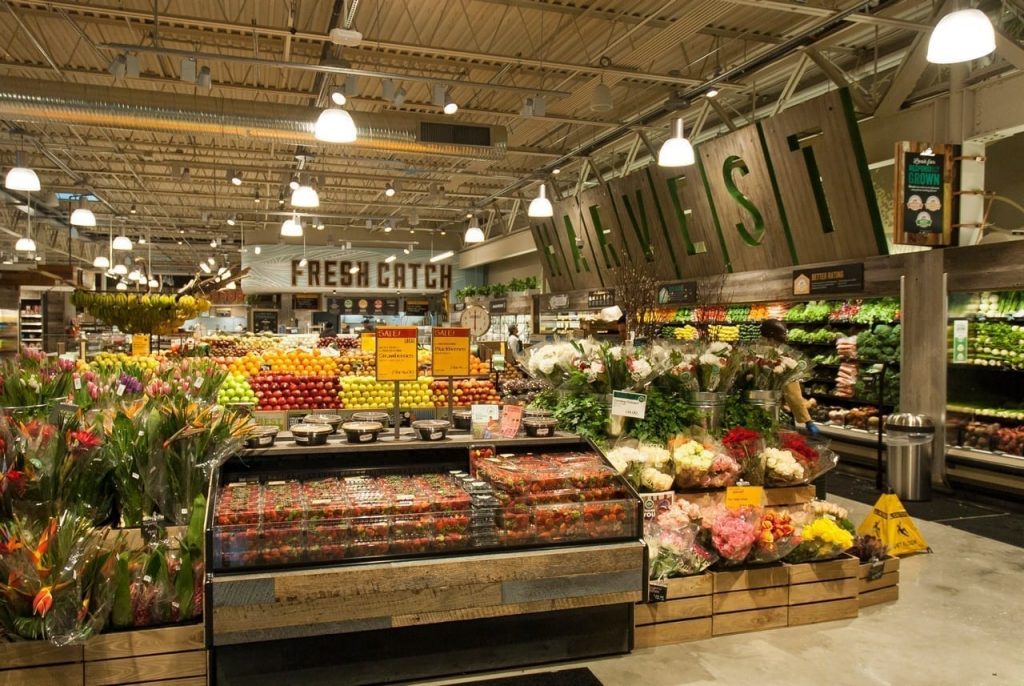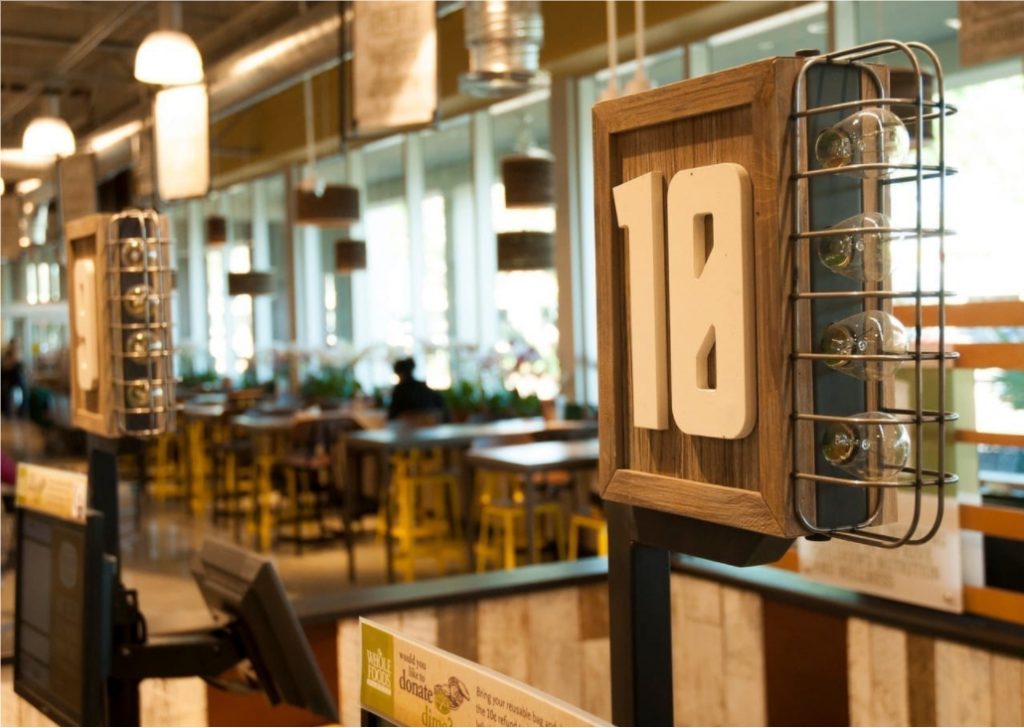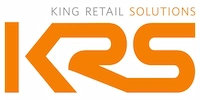
When it comes to influencing the customer’s grocery shopping experience, few elements deliver more impact than grocery store signage. Signage enables you to express your brand, helps customers navigate your store, and invites shoppers to discover new products and take advantage of special offers.
The primary reason consumers cite for choosing in-store grocery shopping is to see and select fresh produce. But grocery stores that provide an experience, not just a transaction, can woo more shoppers. It’s good for average purchase size, too. A recent study of consumers by First Insight discovered that impulse purchases increased when consumers shopped in-store, with purchases increasing by $50 over a similar transaction online.
Unlike fixtures, signage is a grocery store design element that can be changed frequently, giving your store the opportunity to stay fresh and relevant to the consumer without a massive investment. While new signage is always part of a major grocery store remodel or new grocery store design, updated signage can provide an effective facelift between larger capital improvements projects.
Graphic Design Trends Affect Signage
Because of its informational nature, signage is strongly impacted by trends in graphic design. Font styles and color forecasts are constantly evolving, but keep these basics in mind:
- Readability is key. Something that looks great as a concept on a designer’s screen may not translate well to the store environment. Work with a company experienced in grocery store signage design—legibility at a distance requires real interior design and lighting expertise.
- Play with color. While a warmer, earthier palette predominates in the grocery channel, signage is a great place to play with accent colors that are trending in graphic design. Easy-to-produce oversize vinyl wall signs and fabric banners are the perfect place to use seasonal or trending colors.
- Bold Letterforms. Because supermarket interiors can be cavernous, big, bold letterforms work extremely well. For the new, high-end Albertsons Market Street Broadway concept, King Retail Solutions defined departments with architectural, three-dimensional lettering that evokes a mid-century urban food hall.
Camera-ready design
Supermarkets are not exempt from social media’s voracious demand for visually striking, “Insta-worthy” backdrops. Your store design is not just for the shopper who’s physically there—it’s also for their friends, family, and followers. The same goes for your signage. Use signage to create vignettes that tempt shoppers to “share”.
And why stop at simply identifying a department with signage, when you can make it a meme? In the Market Street Broadway grocery store, the perimeter wall above refrigerated beer cases features eye-catching, oversized graphics stating, “In Beer there is Freedom” and “In Wine there is Wisdom”. A little humor can enliven supermarket signage and add a touch of wit to the shopping experience.
Popular design themes for grocery store signage
Handcrafted
The hand-crafted look, which is still a strong design theme, expresses authenticity, friendliness, sustainability and health, which makes it particularly appealing in grocery store interior design.
In the award-winning design for Whole Foods Market in Davie, Florida, King Retail Solutions drew on the materials, hardware and applications of a rustic cattle ranch, and gave it a unique regional inflection. Using distinct materials like Fireclay tile and native cypress, KRS utilized color and large-scale, destination headlines like “BUTCHER” and “HARVEST” to take shoppers on a journey of discovery. Much of the production was done in-house by KRS custom craftsmen. Murals were hand-painted onto brick. Rope and wood signage was antiqued by hand; wood was routed and hand-stained.
Vintage and retro
Nostalgia for simpler times has fueled the American consumer’s continuing love affair with vintage and retro design. These can range from “farmhouse” to atomic-age motifs, from earnest to tongue-in-cheek. Vintage fonts can give signage fresh impact in perimeter signage, where the large scale makes legibility less of a concern.
The commercial art and architecture of mid-century America, which often utilized sculptural, cut-out, and free-standing signage, is enjoying a revival in grocery stores, where lightweight materials and modern manufacturing methods allow designers to dream big. For maximum impact, suspend and float three-dimensional signage from the ceiling or from space-defining structures like horizontal “trellises” and lightweight faux beams.
Hyper-Local
In the past, a corporate, cookie-cutter approach to branding meant that a supermarket in Toledo would have exactly the same look as one in Miami. Today, consumers want to “shop local”. Grocery retailers strive to reference their local trade area in interior design. Since 2008, Trader Joe’s stores’ perimeter walls have featured hand-painted murals that depict local scenes and local history. In coastal Capitola, California, the mural features surfing imagery, while the Carson City, Nevada store includes scenes of the old West.
New store designs for Whole Foods store include references to iconic local architecture, as in the downtown Los Angeles store, which incorporated art deco motifs to evoke Union Station, one of the city’s architectural treasures.
Aisle directories and wayfinding signs for grocery stores
Once strictly utilitarian, aisle signage for grocery stores offers an easy way to enhance the grocery shopping experience. Helping a customer quickly and easily navigate your store is important, so clarity and readability from a distance are key. But don’t overlook the opportunity to express your brand and tell your story, even if it’s just with a pop of color or a fun, eye-catching sculptural element. Aisle signage can include end caps, hanging signage or inline signage that attaches to shelving units. Whatever you choose, consistent design is essential to keeping shoppers on track.
Floor signage
Floor graphics became common during the pandemic, when they were used to promote social distancing. But grocery store floor signs can be remarkably effective, as they’re virtually impossible to ignore. Human beings instinctively avoid stepping on something in their path–even if it’s a perfectly flat sign safely adhered to the floor. (Material for floor signage must be OSHA compliant to prevent accidents.) Because of its inexpensive nature, you can use floor signage to draw attention to new offerings, highlight a special promotion, or even create an interactive “treasure hunt” to engage shoppers with kids.
Perimeter signage
The most dramatic and impactful grocery store signage opportunities are on perimeter walls as well as the soffits above service areas, such as the butcher and deli department, or over refrigerated cases. Budget-friendly digital wall vinyl can produce tremendous visual impact in these areas.
Dimensional wall lettering or sculptural elements offer a textured, visually rich form of signage that communicates a quality or upscale feeling. In Fresh St. Market, King Retail Solutions used theatrical, sculptural elements, including an oversized butcher’s cleaver “stuck” in the sign above the meat counter. Sculptural, 3-D signs can feel substantial despite the fact that they’re typically constructed with lightweight foam.
Big banners
Thanks to improvements in digital output, it’s easy to create affordable, oversized banners that deliver tremendous graphic impact and give a department an entirely new look. Take advantage of the opportunity to bring themes of the season into your grocery store interior. Why display images of the same fruits and veggies (and that same dairy cow!) year-round?
Menu boards
An often-overlooked type of signage is menu boards for deli and other service counters. Make sure they’re part of your integral signage strategy and not an afterthought. Easy to update video signage can be especially useful in grocery store food service operations.
Checkout lights
Checkout lights are another signage element that have gone from purely functional to a prime opportunity for customer engagement. Occupying an ultra-visible position in the front of the grocery store, checkout lights are often the first thing a shopper sees from the parking lot, and they’re one of the last elements of signage that customers encounter, in the checkout line. Their three-dimensional quality lends themselves to creative and sculptural design solutions.

Window clings
Window clings take advantage of one of your most visible and impactful real estate: the facade of your store. Because they’re easy and inexpensive to produce, they’re great for a quick facelift on an older exterior, for promoting special events and evoking seasonal moods. But use caution: window clings are far less effective when they conceal the interior of a grocery store from the outside. Try using them as “frames”, “footers”, or “headers” that enhance the view into the store rather than obscure it.
QR codes ride again
Once headed for tech obscurity, the QR code made a comeback during Covid-19 with the push for contactless transactions. Now that most consumers have been “trained” in the use of QR codes, supermarkets are using them in signage to provide information about promotions, products, ingredients, and healthy diets. QR codes can play a role in enriching the customer experience through on-demand interaction. Hy-Vee Markets have embraced an extensive physical-meets-digital strategy in which QR codes play a large role.
Digital signage and smart signs
Widely adopted internationally, digital signage is taking hold in US grocery stores. Digital signage offers grocery stores the opportunity to continuously update their messaging, as well as integrate in-store and online marketing communications. Because a store can deliver a great deal of content through digital signage, a well thought-out content strategy is essential. Digital signage screens can also be used to display user-generated content, such as reviews of the store’s products and the store itself.
Digital menu boards, shelf-edge screens, and video endcaps and wings are increasingly popular. Eye-catching screens have the added benefit of enlivening center-store aisles. In Walgreens, coolers utilize digital displays rather than traditional glass doors. The screens display ads and messages tailored to nearby shoppers.
New technology is making grocery store signage more interactive. The MEASURE platform by Shelfbucks incorporates sensors into signage to enable CPGs and retailers to track their campaigns and engage with shoppers’ smartphones. The company’s “pull” technology enables consumers to place their phones next to displays and signage to receive more information, rather than spamming them as they move into sensor range.
Scala’s grocery digital signage platform enables stores to edit, change or remove items in real-time. When alerted to low or expiring stock, the price can be instantly and easily adjusted, promoting faster sales and reduced food waste while mitigating revenue loss. It can also be used to drive sales of higher margin products like prepared foods.
Digital signage company Enplug encourages the use of video screens to display recipes to grocery shoppers, which drives incremental sales. Their approach includes offering quick dinner ideas during evening rush hour and meatless options for Mondays, complete with aisle numbers to make it easy for customers to find ingredients.
Mood Media takes digital and video signage a step further, envisioning video content delivery as part of a multi-sensory grocery shopping experience that includes music and even scent. Digital signage has been shown to reduce customer perception of wait time by 35%, so it’s a must-have at checkout.
Grocery store signage was once simply transactional: it enabled customers to identify departments, aisles, and promotions. Today, a dynamic signage program actually enhances the shopping experience, the customer relationship—and the bottom line.
